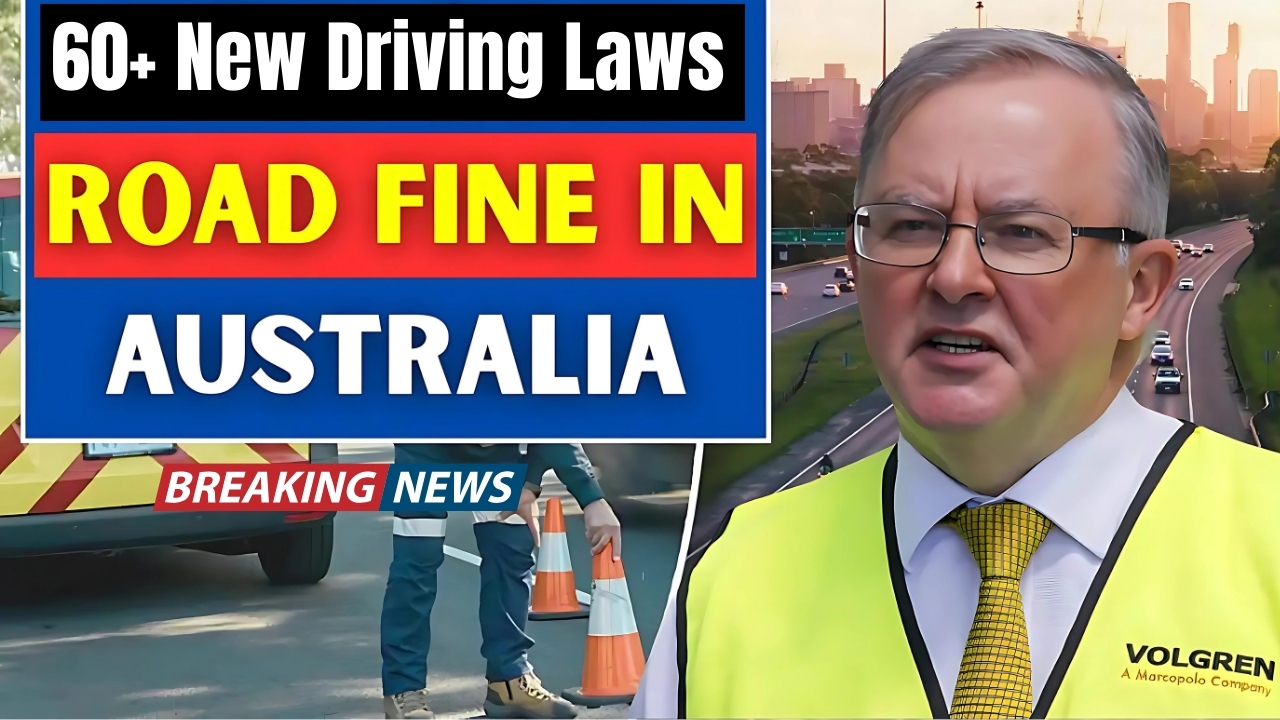Starting in August 2025, Australia will launch its biggest revamp of driving rules in over 30 years, rolling out more than 60 New Driving Laws to drop the nearly 30% spike in road deaths and make room for tech that’s changing how we use the streets.
The Change Everyone’s Eyes Are On
With road deaths climbing sharply last year, roads agencies from Brisbane to Perth worked together for the first time to hammer out one plan that tackles old problems and the newest ones that apps and gadgets create. “This is the biggest top-to-bottom road safety update we’ve seen in a lifetime,” says Bernard Carlon, who leads the country’s road safety centre. He adds, “The more we learn, the better we navigate not just the calm routes but the surprise detours, too.”
The New Rules You Can’t Ignore
Phone use will cost drivers much more, new stops for self-driving features will be watched closely, and rules for e-scooters and e-bikes will be tightened to keep everyone rolling safely on our crowded city streets.
New changes are on the way for drink-driving radar. The permitted breath limit across the nation is lowering from 35 micrograms to 22 micrograms, the goal being to match the tougher Scottish measure introduced back in 2014.
In another crackdown, drivers could lose points if anyone in their car is caught without a seatbelt. The aim is simple: get everyone to buckle up and stay safe. Research shows seatbelts cut death risk in a crash by half. Those are pretty persuasive odds.
Focus is also sharpening on the age-related rules. Fresh conversations are bubbling up about stricter rules for young drivers and also for older drivers, each group facing a wave of new requirements.
Young drivers will have a passenger restriction rule for their first six months after getting their license. When a rookie gets behind the wheel, there’s a cap on the number of mates their own age who can come along. Research, backed by the lessons of Australia, New Zealand and Canada, shows this simple step could cut rookie driver deaths by as much as 40%.
For Aussie drivers over 70, the rules are changing. From now on, annual eye checks will be mandatory, and license renewals will be shortened so older drivers can demonstrate they are still fit for the road. Meanwhile, scientists at the University of the Sunshine Coast are busy improving tests that measure older folks’ mental sharpness when they drive.
Getting a new game plan on tech and rules. The laws are catching up with the latest gadgets inside cars. Nation-wide rules now spell out how driver-assist tech and partial automation can safely fit into our everyday rides, so both makers and drivers know what to expect. The plan rides on extra cash for traffic teams and new eyes on the road. More officers will patrol with fresh funding, plus smart cameras that can catch folks texting, skipping the seatbelt, and other rule-busting behaviours.
The Education Part
Besides keeping an eye on the roads, teaching the right habits is the other part of the plan. Transport for NSW has rolled out the Road Safety Learning Lab, an online, hands-on zone where everyone who uses the roads can test and sharpen their safety smarts—anyone can hop on at transport.nsw.gov
“If you drive, ride, or walk, it’s easy to decide you already know the rules and stop thinking. The Road Safety Lab turns that lazy thinking upside down by showing you fresh facts and powerful stories,” Carlon says. You choose the right answer, and in seconds you see how it matches the latest evidence.
When do the new rules kick in?
Every update adds speed from August 22, 2025.
Where do I read the details?
Drop by your state’s transport site or the new national Road Rules Awareness portal.
Is there an adjustment phase? Yes, a month of classroom, not court, for most rules.
What about visitors from overseas?
Tourists must drive by the same playbook; car hire desks will hand out the new cheat sheets.
Australia P-Plate Driving Laws 2025: New Rules, Penalties and Safety Guidelines





